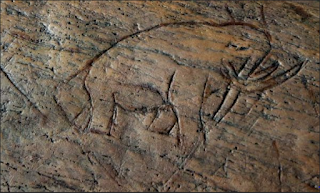Written by the TreasureGuide for the exclusive use of the Treasure Beaches Report.
 |
| Oldest Coin Ever Found in Canada(?) Source: See nsnews.com link below. |
CUPIDS, N.L. — An archeologist in eastern Newfoundland says his team has unearthed what could be the oldest English coin ever found in Canada.
William Gilbert, head archeologist at the Cupids Cove Plantation Provincial Historic Site, says the small silver coin was minted sometime between 1493 and 1499...
Here is the link.
---
 |
| Ambersands Beach Thursday Afternoon Photo by JamminJack. |
At Ambersands there is still a lot of renourishment sand.
 |
| Golden Sands Beach Thursday Afternoon. Photo by JamminJack |
You can see all the renourishment sand at Golden Sands.
Treasure Shores was closed yesterday. I assume Seagrape Trail is also still closed.
Jack also sent a photo of Wabasso. No big changes there. Still a lot of sand.
Thanks Jack.
----
Yesterday I posted the following photo of an item that was recently found on a Treasure Coast beach. It is over a foot long, 7.5 inches in diameter, and about 32 pounds. I asked if you could guess what it is. Some people thought it looked like petrified wood. It does, but it is actually a section of mammoth tusk.
 |
| Previously Posted Mystery Object. |
Being mammoth tusk means it would be over ten thousand years old.
Imagine a Florida of the past populated by mammoths and mastodons. Mammoths and mastodons are different. Mastodons go back much farther in history and were generally smaller. Both lived along what is now the Treasure Coast.
 |
| Cover of Florida Fossil ID Book by Robin Brown. |
You might know about the world-famous Vero Man fossil found by local man, James Kennedy. That find suggests that humans and mastodons lived on the Treasure Coast contemporaneously. Amateurs make major contributions. This is one example.
 |
| Famous Vero Man Carving |
If you search treasurebeachesreport.blogspot.com you'll see that I talked about Kennedy's find several times in the past. Here are a couple of links.
There is a very distinct characteristic that will help you identify mammoth ivory. A herringbone pattern will be evident even on small pieces. The pattern is very clear on the newly found item.
Below is an excerpt from Richard Hulbert's book on Florida fossils.
 |
| Page From Richard Hulbert's Florida Fossil ID Book. (Highly recommended). |
The herringbone pattern is very evident on the recently found piece.
As I said, mammoths and mastodons are different. Here is another item found the same day.
 |
| Partial Mastodon Tooth |
Mastodon teeth are different than mammoth teeth. This appears to be a broken mastodon tooth. It has a very nice surface. You can see some nice blue color on it.
---
 |
| Source: MagicSeaWeed.com. |
Happy hunting,
TreasureGuide@comcast.net